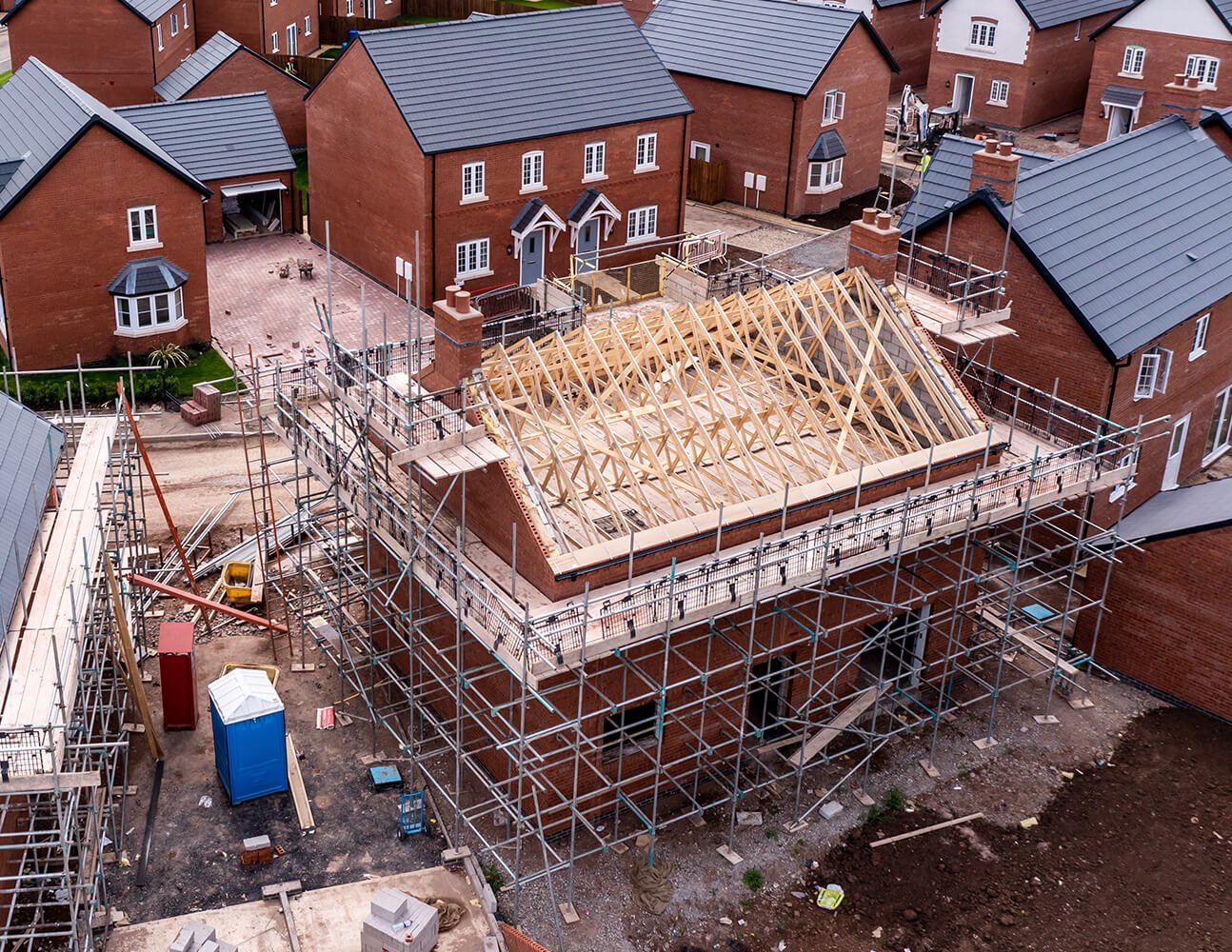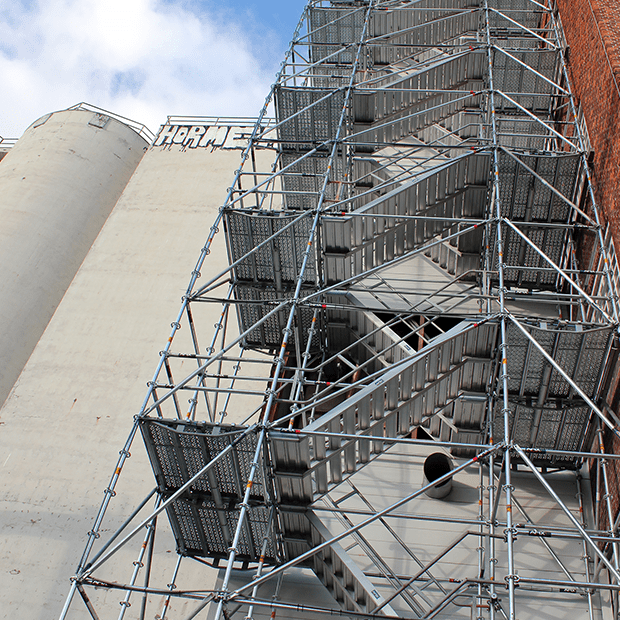Quality Scaffolding Surrey for Both Residential and Commercial Projects
Quality Scaffolding Surrey for Both Residential and Commercial Projects
Blog Article
Checking Out the Numerous Kinds Of Scaffolding Made Use Of in Construction Jobs
The building market depends greatly on numerous kinds of scaffolding to satisfy particular job demands, each offering distinct benefits and applications. Conventional framework scaffolding supplies a strong structure for general jobs, while suspended scaffolding is necessary for service skyscraper frameworks. Other choices, such as system and rolling scaffolding, cater to performance and movement, respectively. The cantilever alternative shows invaluable in city atmospheres where area is constrained. Recognizing the nuances of these scaffolding kinds is essential for enhancing safety and performance on construction sites, motivating a closer evaluation of their distinct attributes and applications.

Standard Structure Scaffolding
Traditional framework scaffolding is just one of the most commonly made use of methods in the building industry because of its robustness and versatility. This system includes upright and straight frames that are set up to produce a stable system for materials and workers. The primary components consist of vertical messages, straight ledgers, and angled dental braces, which with each other supply a strong structure that can sustain considerable tons.
One of the key advantages of standard framework scaffolding is its flexibility to numerous construction jobs, varying from residential buildings to large business structures. The modular style permits for simple assembly and disassembly, making it efficient for both long-lasting and short-term projects. Furthermore, the system can be tailored in elevation and width, suiting various building designs and website problems.
Safety and security is extremely important in scaffolding applications, and typical structure systems are geared up with guardrails and toe boards to stop falls and make sure employee security. Routine examinations and adherence to safety policies are essential in preserving the integrity of the scaffold (Scaffolding). On the whole, typical frame scaffolding stays an essential selection in the building and construction sector, offering a trusted system for labor and enhancing overall task effectiveness

Suspended Scaffolding
Suspended scaffolding offers an one-of-a-kind solution for building tasks that need access to raised surface areas, specifically in circumstances where conventional structure scaffolding might be unwise. This kind of scaffolding is commonly suspended from the roofing or upper degrees of a structure, making use of a system of ropes, wheels, and systems to create a functioning room that can be readjusted to numerous heights.
Among the key advantages of suspended scaffolding is its flexibility. It can be quickly rearranged or lowered to fit adjustments in construction requirements, making it perfect for jobs such as home window setup, frontage work, and maintenance on skyscraper buildings. Furthermore, the minimal footprint of put on hold scaffolding enables for better use ground room in urban environments, where space is commonly limited.
Security is a crucial consideration in making use of suspended scaffolding. Appropriate rigging and securing systems have to be used to make sure stability and prevent mishaps. Operators needs to likewise be trained in the secure use this tools. Generally, put on hold scaffolding provides a efficient and efficient solution for accessing hard-to-reach areas in different construction situations, improving both productivity and safety and security on site.
System Scaffolding
System scaffolding, commonly considered as a contemporary remedy in the scaffolding industry, consists of pre-engineered parts that can be rapidly assembled and adjusted for numerous building projects. Scaffolding. This kind of scaffolding is identified by its modular design, which permits flexibility and efficiency on work websites, accommodating structural needs and different elevations
Normally made from high-strength steel or aluminum, system scaffolding offers boosted longevity and stability. The components include upright messages, straight journals, and angled braces, which adjoin firmly, making sure a durable structure. The layout usually incorporates standard fittings, simplifying assembly and disassembly processes, thus minimizing labor time and costs.

Rolling Scaffolding
Moving scaffolding is a versatile choice to conventional fixed scaffolding, developed for flexibility and convenience of usage on construction websites. This kind of scaffolding contains a platform sustained by structures with wheels, permitting workers to conveniently relocate it as needed. The mobility attribute significantly boosts efficiency, as it reduces downtime connected with taking apart and constructing taken care of scaffolding.
Commonly constructed from light-weight products such as light weight aluminum or steel, rolling scaffolding supplies a sturdy yet portable option for jobs calling for frequent repositioning - Scaffolding. It is especially useful in jobs such as painting, drywall installation, and electric work, where access to different heights and areas is necessary
Safety is extremely important in rolling scaffolding layout, with features such as securing wheels to avoid unintended activity when in usage, and guardrails to secure workers from drops. Additionally, several versions are adjustable in height, fitting various task needs.
Cantilever Scaffolding

The design of cantilever scaffolding normally involves utilizing brackets or arms anchored to a structure or structure, enabling the system to prolong outward safely. Safety and security see here now is vital; hence, these scaffolds need to be crafted to endure ecological conditions and numerous loads. Routine evaluation and maintenance are necessary to make sure architectural stability and employee safety and security.
Cantilever scaffolding is preferred for its adaptability and effective usage of area, making it a preferred choice in urban settings where space restraints are typical. It promotes easier access to high elevations, eventually contributing to the overall performance of building tasks. Similar to all scaffolding kinds, proper training Look At This and adherence to security criteria are crucial for workers making use of cantilever scaffolding.
Final Thought
Standard frame scaffolding gives stability, while put on hold scaffolding uses flexibility for raised tasks. System scaffolding facilitates quick setting up, and rolling scaffolding enhances wheelchair for varying work settings.
Traditional framework scaffolding supplies a strong structure for basic tasks, while put on hold scaffolding is vital for job on skyscraper structures.Rolling scaffolding is a flexible alternative to standard set scaffolding, made for mobility and convenience of usage on building and construction websites. As with all scaffolding types, correct training and adherence to security requirements are critical for workers using cantilever scaffolding.
Standard structure scaffolding offers security, while suspended scaffolding offers flexibility for elevated jobs. System scaffolding assists in fast assembly, and rolling scaffolding enhances mobility for varying job atmospheres.
Report this page